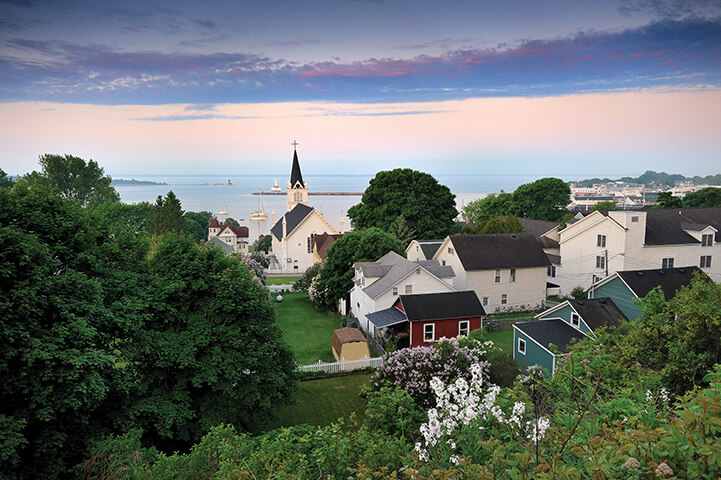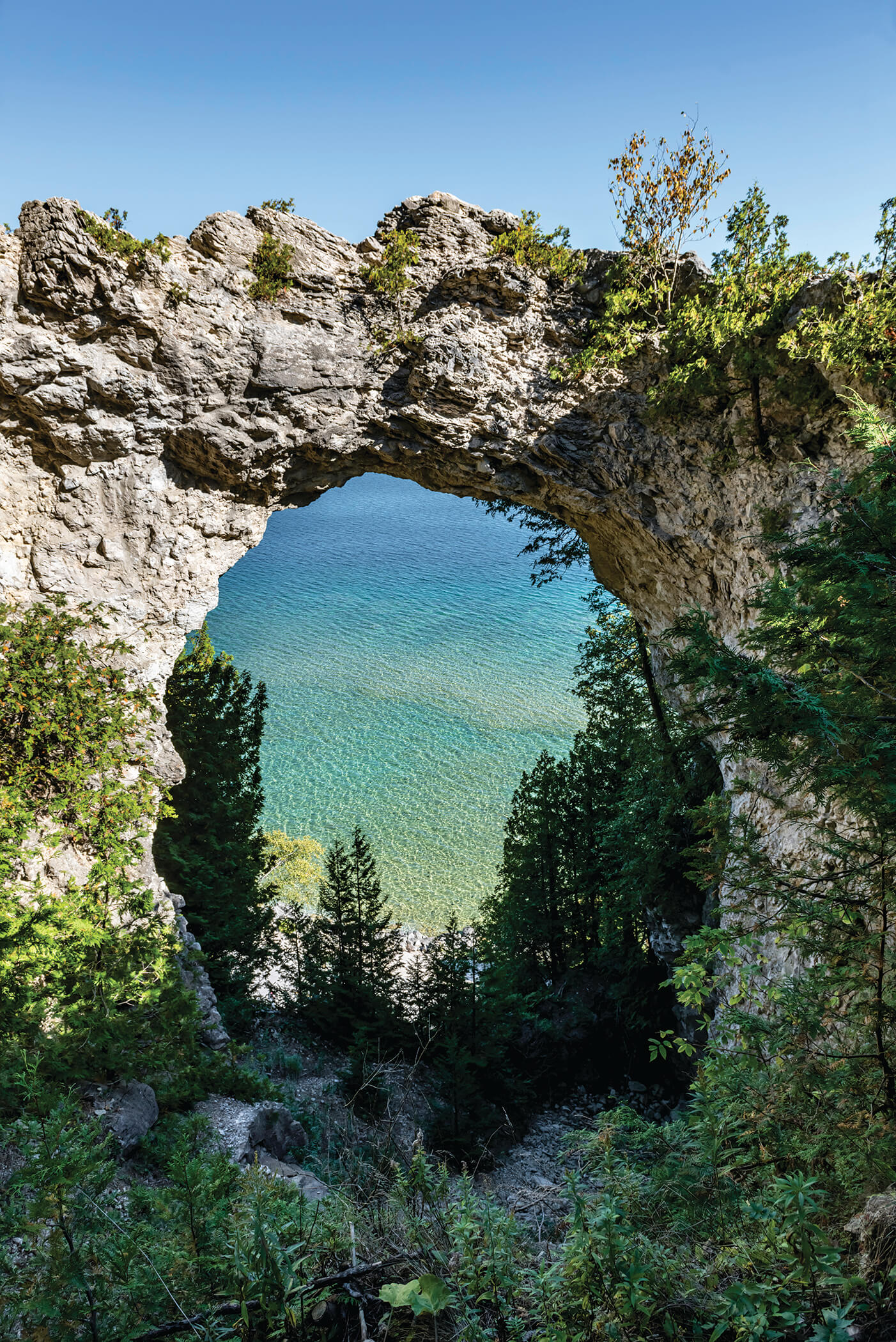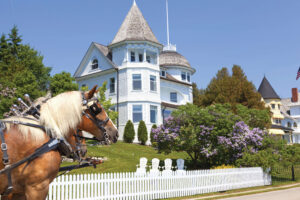
Mackinac Island: From Past to Present
Located at the eastern end of the Straits of Mackinac sits Mackinac Island (pronounced Mack-i-naw), nestled quietly in the place where Lake Michigan meets Lake Huron. Mackinac Island has a small year-round population of about 500 people, but in the summer, the population rises. The village’s tourism business brings in a brigade of workers who live on the island just for the warm months, which are an active time for this small resort and tourist destination. Often referred to as the “crossroads of the Great Lakes,” Mackinac Island has been a popular site since the late 1800s, and for good reason: the island is a truly unique place with a rich cultural and military history and an incredible natural beauty.
Mackinac Island was formed around 13,000 BC when the glaciers of the last Ice Age melted. The surrounding Great Lakes were also formed then. Artifacts have been unearthed that have established a Native American presence on the island dating back as early as 900 AD. The name “Mackinac” is a shortened form of the Ojibwe word “Mishimikinaak” or “Mitchimakinack,” which means “Big Turtle.” The shape of the island is certainly representative of a turtle, but the Anishinaabe also say that the island is home to a Great Spirit, and the turtle is a sacred figure in Native culture. It represents Mother Earth and signifies good health and long life.

Mackinac Island, USA
Since the original Native inhabitants, Mackinac Island has changed hands many times. The first European presence on the island was in the mid-1600s, and the first settlement was in 1671, when Father Jacques Marquette founded a mission there that lasted just briefly. After a year, the mission relocated—twice—eventually ending up near present-day Mackinaw City in 1708, where the French also built a fort for fur trading. British seized control of the fort after their victory in the Seven Years War. They subsequently dismantled the fort and moved the garrison and the fur trade back to Mackinac Island during the American Revolutionary War. Since Mackinac Island is raised in the middle and has tall limestone bluffs, the British theorized that it would provide better grounding for battle. There they built Fort Mackinac, though it was never attacked during the Revolutionary War. The United States acquired the territory and the fort after the Treaty of Paris ended the war in 1783, though the British didn’t officially give up ownership of the fort until the mid-1790s.
Mackinac Island was again a point of contention during the War of 1812, when surprised American troops surrendered Fort Mackinac (then called Fort Michilimackinac) to British soldiers. The British forces built a second fort on the island, Fort George, to use as a vantage point and stockade. American superiors, unhappy about the surrender, planned an attack to recapture the fort, and in 1814 the legendary Battle of Mackinac Island—the only battle ever actually fought on the island—ensued. Though the U.S. troops were handily defeated by the British-occupied forts, the end of the War of 1812 and the Treaty of Ghent returned the island and both forts to the control of American forces. They renamed Fort George “Fort Holmes” in honor of Major Andrew Holmes, who was killed during battle.
With the war over, Mackinac thrived. It became a hub for fur trading in the 1820s, and soon after, the fishing industry also boomed. But the island didn’t remain a sleepy fishing town for long. As early as the 1850s, Mackinac Island began to attract tourists, and when the Civil War ended, and railroads spread across the nation, the tourism industry grew tenfold. Mackinac Island became a national park in 1875, just three years after Yellowstone, making it the nation’s second-ever national park. With this title came another influx of visitors and, in the late 1800s, the introduction of sport fishing attracted even more guests. In 1887, the Grand Hotel was built, which is the largest summer hotel in the world to this day. Mackinac Island was transferred from the federal government to the state of Michigan in 1895, making it a state park. Today, Mackinac State Park takes up over 80% of the island, the entirety of which was listed as a historic landmark in 1960.

Mackinac Island West Bluff Victorian Cottage
Mackinac Island tourism today is as alive as ever. The island banned automobiles in 1898 when too many horses were startled by roaring engines, so visitors get around on foot, bicycle, or by horse-drawn buggies. An eight-mile highway encircles the village—the only highway in the U.S. where motor vehicles are banned. There are a number of rock formations and caves, formed by glacial activity, strewn around the island and open to public view. The most famous is perhaps the Arch Rock, a 144-foot tall natural limestone arch on the eastern side of the island that overlooks the shoreline of Lake Huron. The Devil’s Kitchen, the Skull Cave, and Sugar Loaf are just a few of the other natural formations that people flock to see each summer. Aside from its geological wonders, the island is home to a bevy of beautiful Victorian homes and 19th century churches, over 70 miles of hiking trails, and nearly 15 fudge shops. The Grand Hotel still sits on the south shore of the island, as stately as ever, and has housed such famous guests as Madonna, James Earl Jones, Mark Twain, and President John F. Kennedy. Mackinac Island is the perfect place to get away from the bustle of traffic and step back in time.